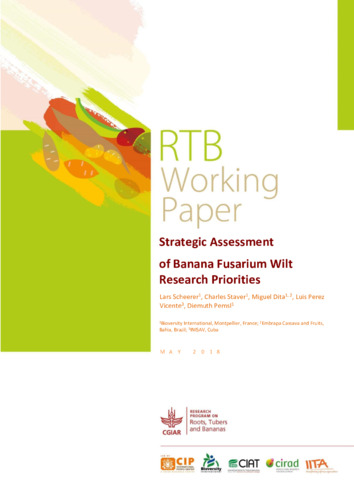Strategic assessment of banana fusarium wilt research priorities
Abstract
Global banana production is seriously threatened by the emergence of a new, highly virulent strain of Fusarium Wilt (FW), caused by the soil-borne fungus Fusarium oxysporum f. sp. cubense (Foc). Foc (tropical race 4 - TR4) was first diagnosed in Cavendish banana in Taiwan in 1967, but has since reached Indonesia, Australia, Malaysia, China, Philippines, Vietnam, India, Pakistan and Myanmar, the Middle East (Jordan, Oman) and most recently Mozambique in Africa in 2013. Recent estimates suggest that the disease is already affecting over 100,000 hectares and threatens millions of smallholders worldwide because many banana cultivars are susceptible. Projections based on the current distribution of cultivars suggest that TR4 could affect 80% of the global banana production. As the pathogen persists in the soil for many decades and many cultivars are susceptible, there has been a call to address the threat of TR4 with a mobilization of resources and plant quarantine initiatives globally to limit spread and losses.
As part of a study to assess the economic returns to different banana research investments through the CGIAR Research Program focusing on Roots, Tubers and Bananas (RTB), a set of banana research options has been formulated based on priorities identified through a large-scale online stakeholder survey. In this survey, Fusarium wilt was rated as the fourth most important constraint globally and ranked first in Asia. Since it has not yet or to a lesser extend spread in other geographies, rankings were lower in other regions: seventh most important constraint in East and Southern Africa and sixth in Latin America. Fusarium was not in the top ten constraints for West and Central Africa.

